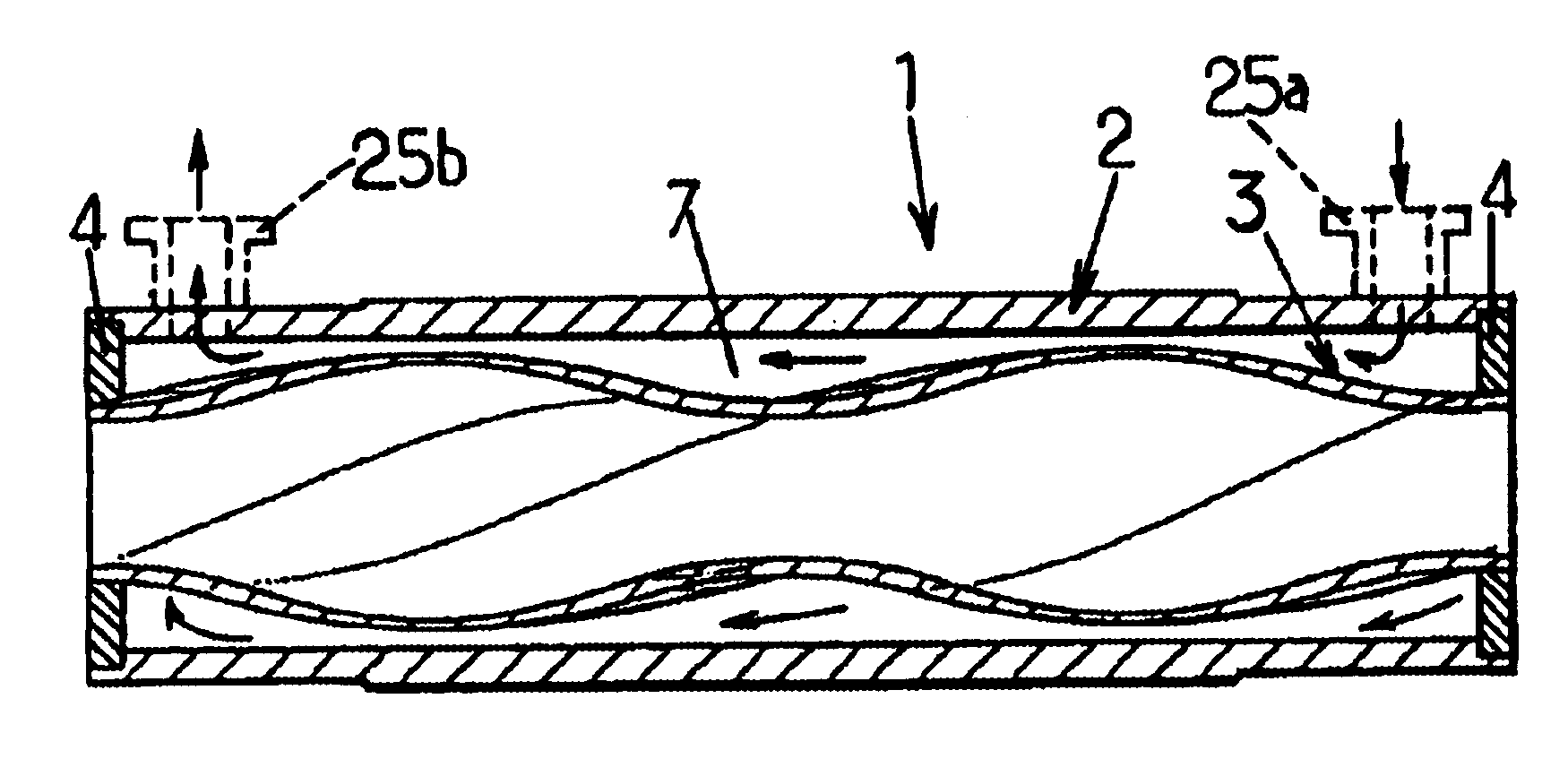Method for making a moineau stator and resulting stator
a stator and moineau technology, applied in the direction of rotary or oscillating piston engines, engine lubrication, rotary piston engines, etc., can solve the problems of high complexity and slow machining methods, manufacturing exercises have proved to be very expensive, and solid metal stators have never been widely used on an industrial scal
- Summary
- Abstract
- Description
- Claims
- Application Information
AI Technical Summary
Benefits of technology
Problems solved by technology
Method used
Image
Examples
first embodiment
illustrated in FIG. 8, the rough form 12 is slipped over a core 15 which, externally, has the exact desired shaping for the stator cavity. The rough form / core assembly is placed in a closed chamber 16 (hydroforming chamber) that is filled with a liquid 17. By pressurizing this liquid, the rough form 12 is crushed (arrows 18) onto the core 15: this then constitutes the tubular metal element 3 the inner face of which is shaped exactly to the external shape of the core 15 (hydroforming by compression onto an internal core).
second embodiment
illustrated in FIG. 9, the rough form 12 is introduced into a mold 19 having a cavity 20 shaped to the exact shape to be given to the tubular element 3 that is to form the stator cavity. The ends of the rough form 12 are hermetically sealed and the interior volume of the rough form is filled with liquid 17. By pressurizing this liquid, the rough form 12 is crushed (arrows 18) against the wall of the molding cavity 20: this then constitutes the tubular element 3 (hydroforming by expansion against an external mold).
It will be noted that, in the process of hydroforming by compression onto an internal core, it is the interior face of the tubular element 3 (that is to say strictly speaking the face defining the stator cavity itself) which is brought into contact with the core and which directly and closely adopts the shape of the latter. By contrast, in the process of hydroforming by expansion against the wall of the molding cavity, it is the outer face of the tubular element 3 which is ...
PUM
| Property | Measurement | Unit |
|---|---|---|
| Electrical resistance | aaaaa | aaaaa |
Abstract
Description
Claims
Application Information
 Login to View More
Login to View More - R&D
- Intellectual Property
- Life Sciences
- Materials
- Tech Scout
- Unparalleled Data Quality
- Higher Quality Content
- 60% Fewer Hallucinations
Browse by: Latest US Patents, China's latest patents, Technical Efficacy Thesaurus, Application Domain, Technology Topic, Popular Technical Reports.
© 2025 PatSnap. All rights reserved.Legal|Privacy policy|Modern Slavery Act Transparency Statement|Sitemap|About US| Contact US: help@patsnap.com



